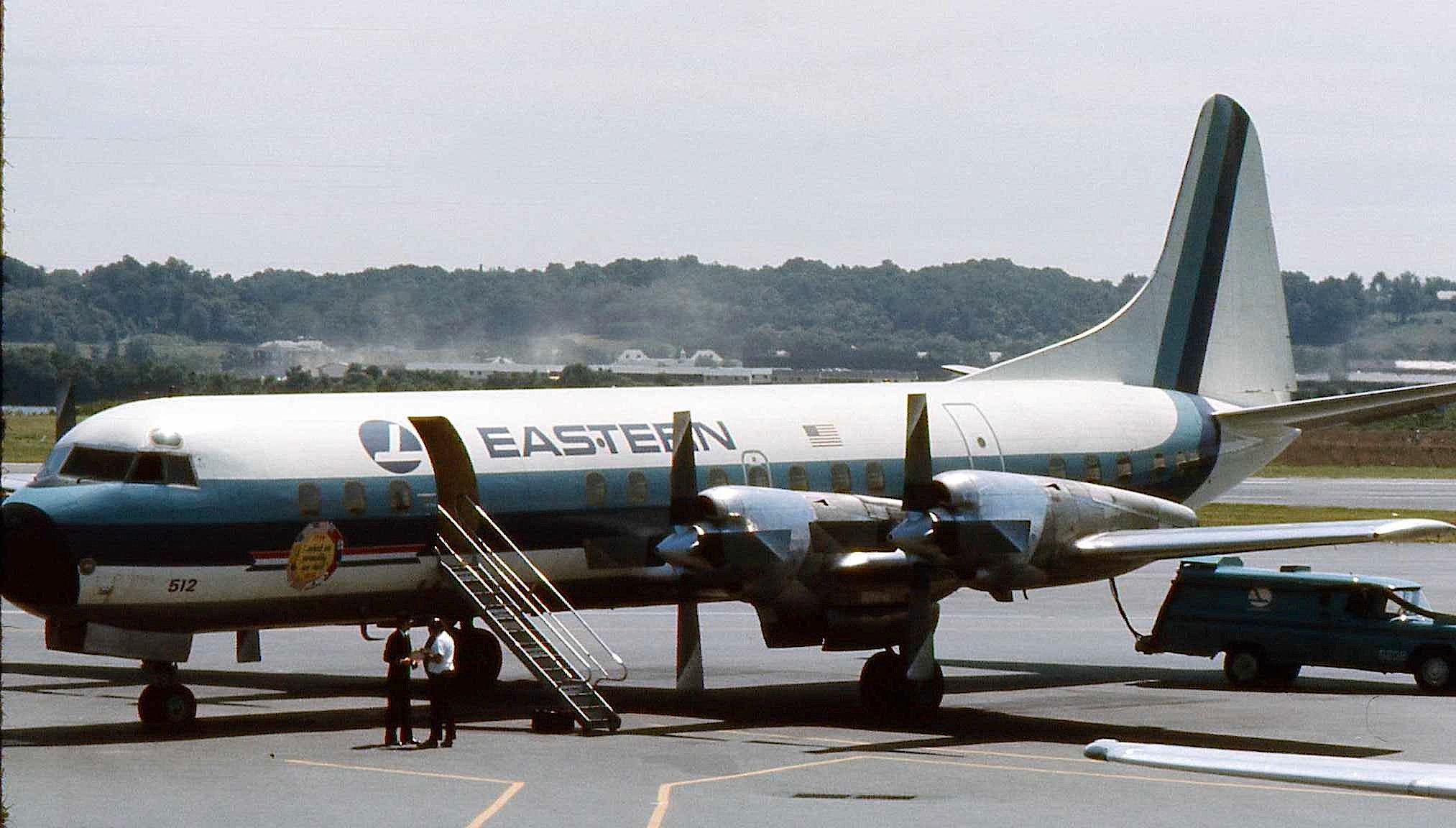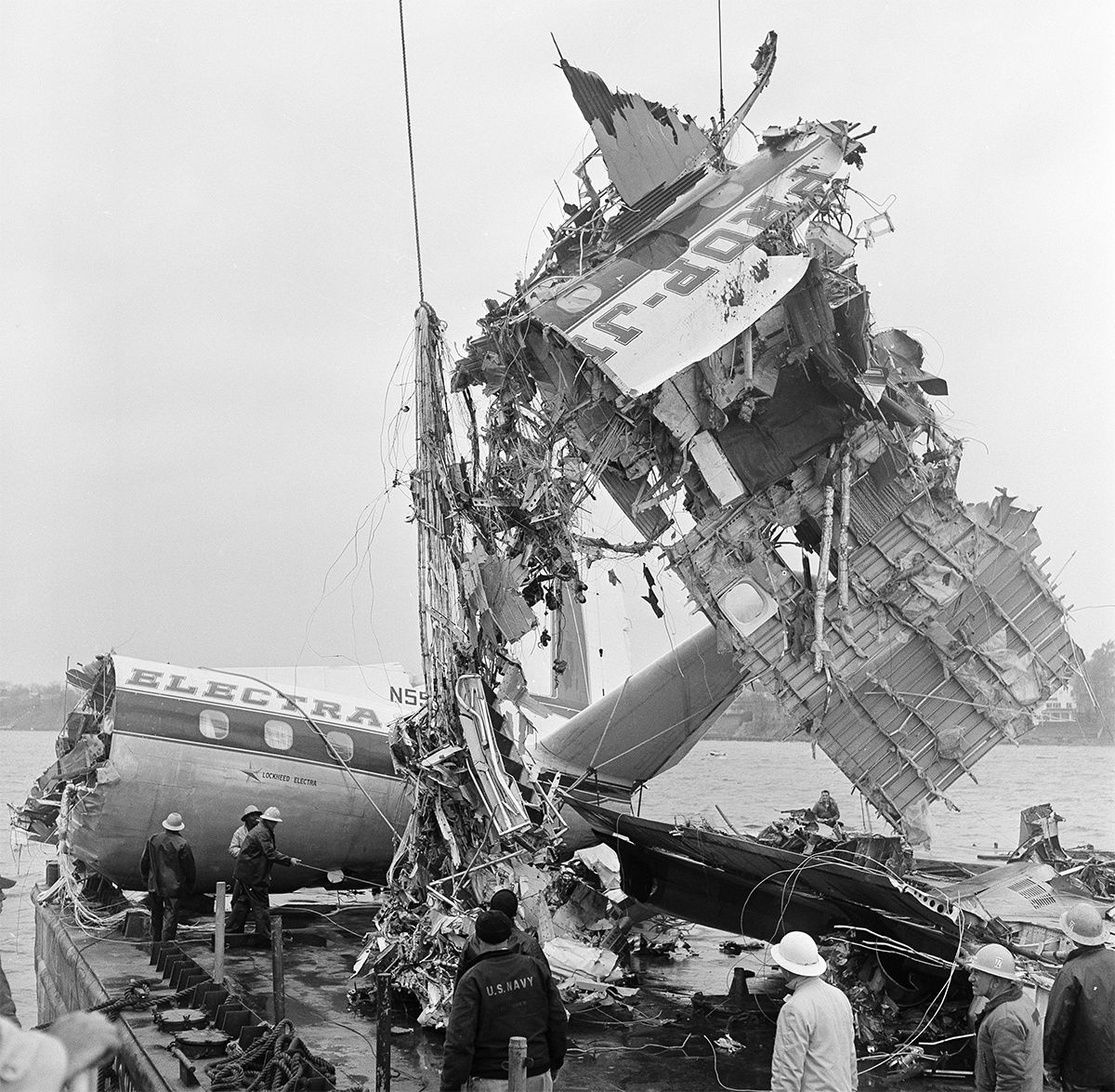It was October 4th 1960 and Eastern Airlines flight 375 was preparing to take off from Boston Logan International Airport. The Lockheed Electra L-188 had just flown in from New York and bound Philadelphia, Charlotte, and Greensville before finally arriving in Atlanta.
Onboard
On the flight deck were captain Curtis W. Fitts, co-pilot Martin J. Galloway and flight engineer Malcolm M. Hall. Working in the cabin were flight attendants Joan Berry Hale and Patricia Davies. The flight had 67 passengers onboard, a mix of US Marine Corps, some local business directors from a shoe company, some couples and others traveling far and wide.
What happened next
The aircraft left at 17:35 and taxied to runway 09. It was cleared for takeoff at 17:39. The takeoff was normal, but just six seconds later the aircraft hit a flock of starlings. There was a puff of gray smoke from the engines. The aircraft veered left but continued ahead.
At 200 feet, the birds were sucked through the engines and the propeller on engine one feathered and was shut down by the flight crew. Engines two and four lost thrust for a moment and then recovered. However, the aircraft veered left again, the nose dropped and the aircraft crashed into Winthrop Bay.
From the cabin
In the cabin, Joan and Patricia had completed their safety demonstration and checks as usual and were seated on the left side in the lounge area at the rear of the Electra. After becoming airborne, they noticed a considerable amount of vibration in the cabin. There was a short burst of power but the engines did not sound synchronized as normal. They looked at each other, thinking that there was trouble ahead. They felt the aircraft turn sharply to the left before plunging straight down vertically into the bay.
Aftermath
The fuselage had broken into two pieces. Eight passengers seated in the lounge area and in 19C and D at the rear of the aircraft, along with Joan and Patricia, were thrown out of their seats on impact with the water. It had been just 20 seconds since take-off. The front of the aircraft sank to the bottom of the bay taking the flight crew and passengers to their final destination.
Sadly some were trapped in their seats and couldn't release their seatbelts. Some had been thrown from the aircraft, still trapped in their seats. They were floating on the surface of the bay, but the weight of their heads pulled them back under the water.
Rescue
Local residents saw what had happened and rushed to the scene to help. The sun was setting, it was low tide and a horror scene. A bunch of teenage boys helped pull people out of the muddy water. Bodies were covered in mud and disfigured by the force of the impact. There were broken bones, blood and gashes to their heads. Some of those who were trapped by their seats and had drowned slowly drifted to shore. Members of the local yacht club took their boats out to pick up bodies and any survivors. Joan and Patricia were pulled from the water. Of the 72 onboard, 62 died. Just ten people survived the accident, including the two flight attendants.
Cause and effect
The Civil Aeronautics Board discovered that the birds had crashed into the windshield making visibility very limited. Around 75 of the starlings were found on the runway. There were bird remains in the pitot tubes, which would have made the airspeed indicators unreliable. The co-pilot's seat was reported as broken from a previous flight and had not been fixed properly. It is thought that the malfunctioning seat may have fallen backwards, causing him to pull the yoke back inadvertently, which may have contributed to the aircraft's plunge into the bay. The Electra was found to be very sensitive to bird strikes.
"Control of the aircraft under such conditions could have been an insurmountable task.
- Civil Aeronautics Board
The CAB recommended that ways were found to reduce bird populations near airports. The failure of the seats and seatbelts in the cabin pinpointed 'an injury-causing environment' and the advice was that cabin safety should be enhanced on the Electra.



